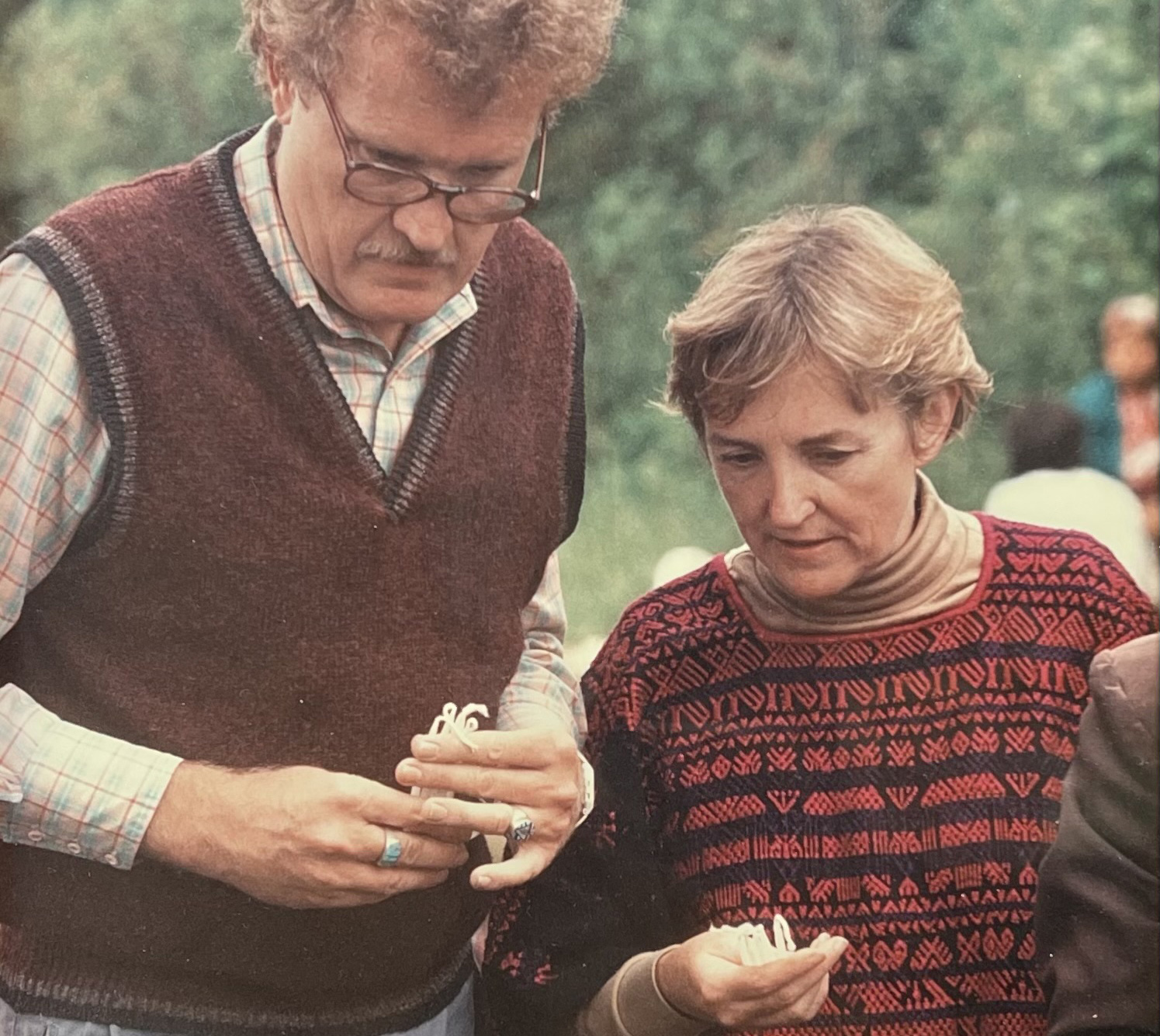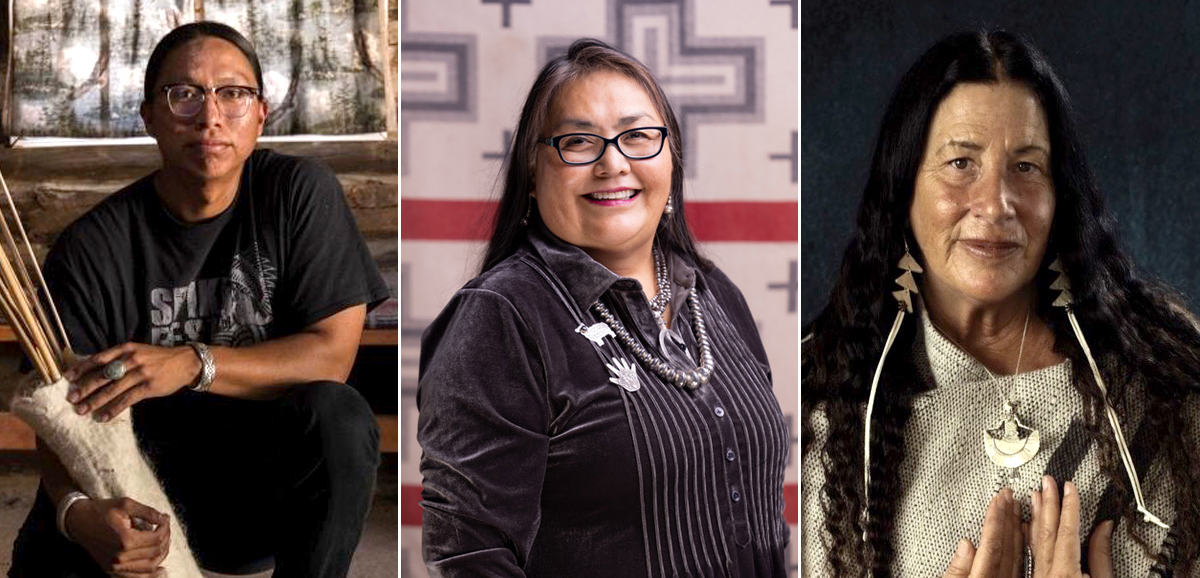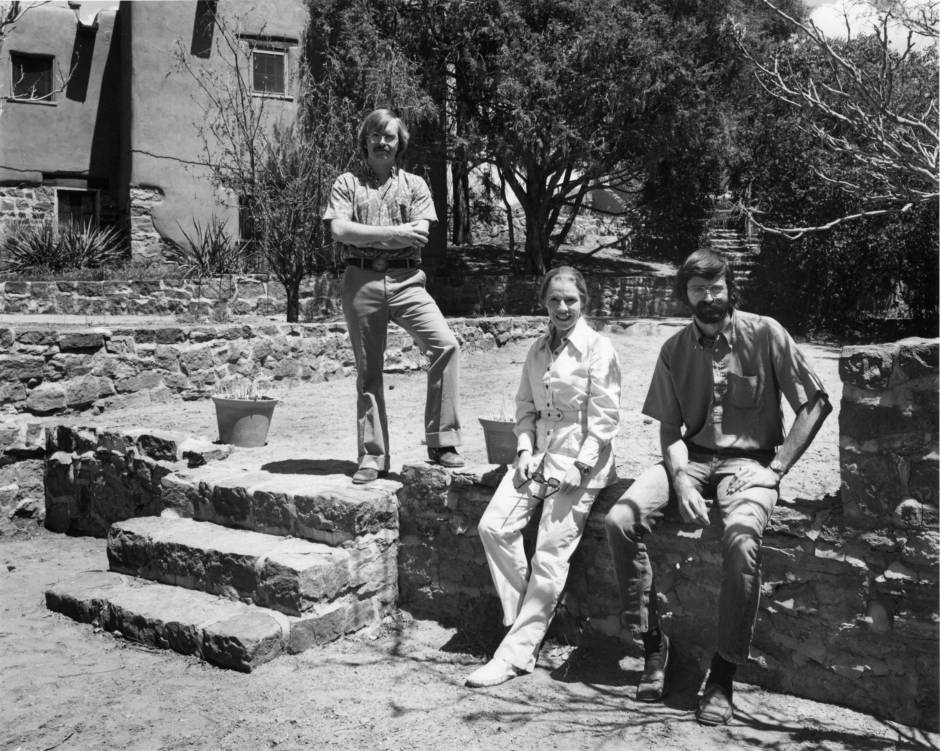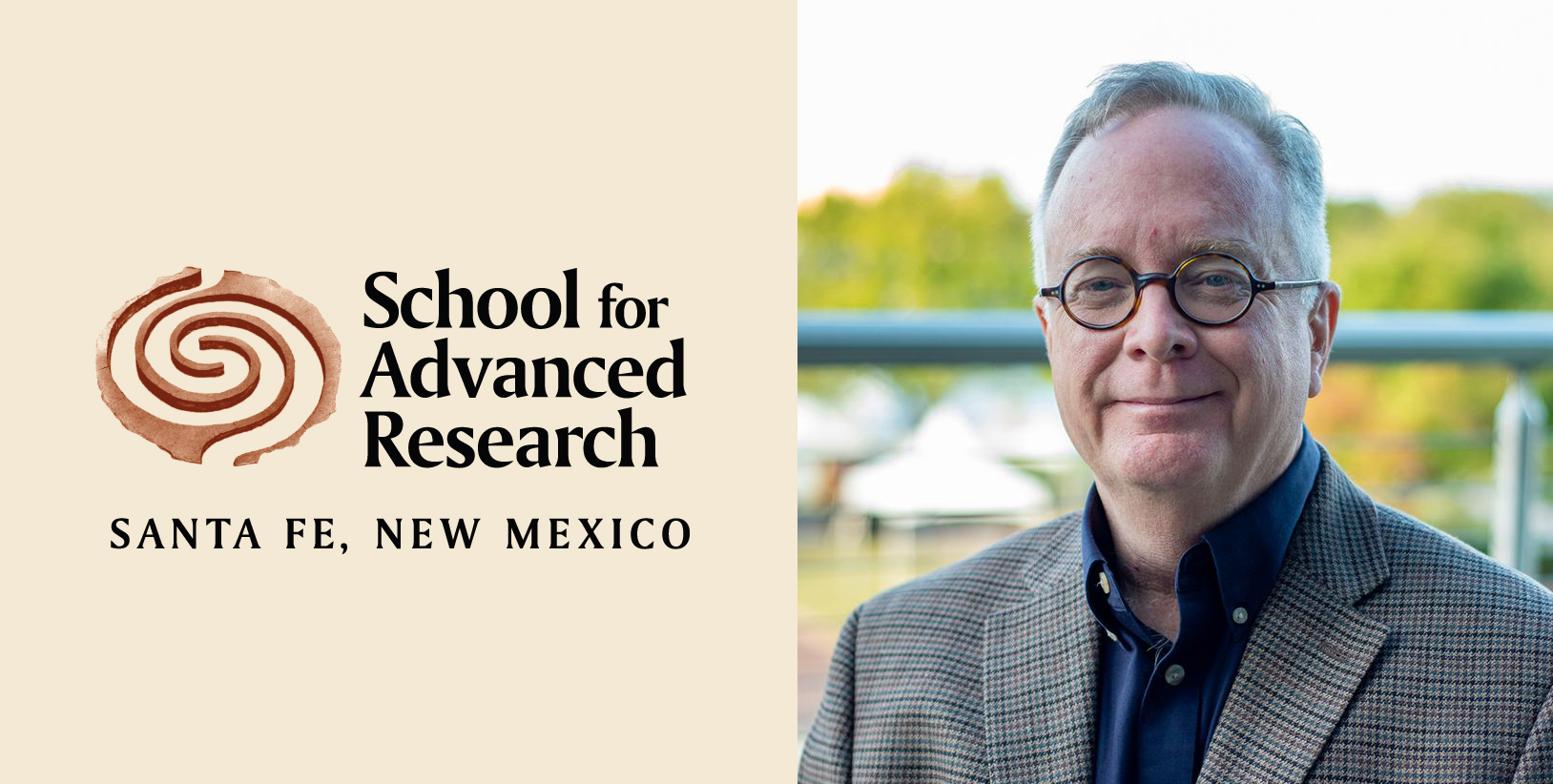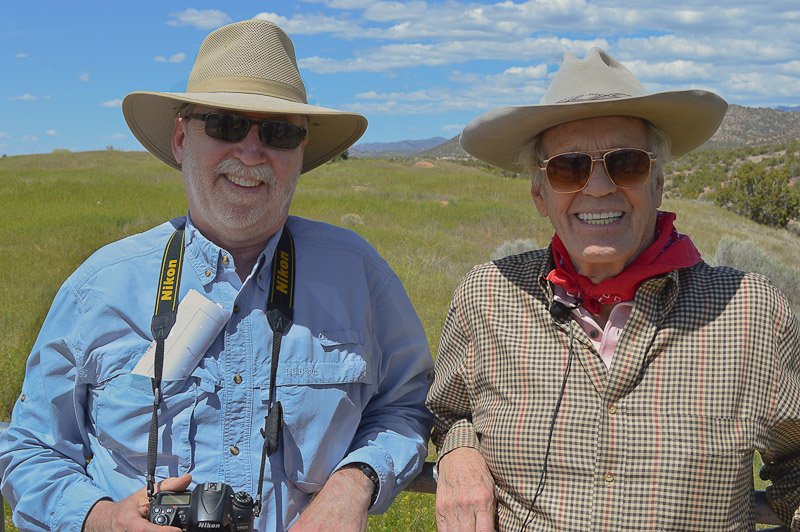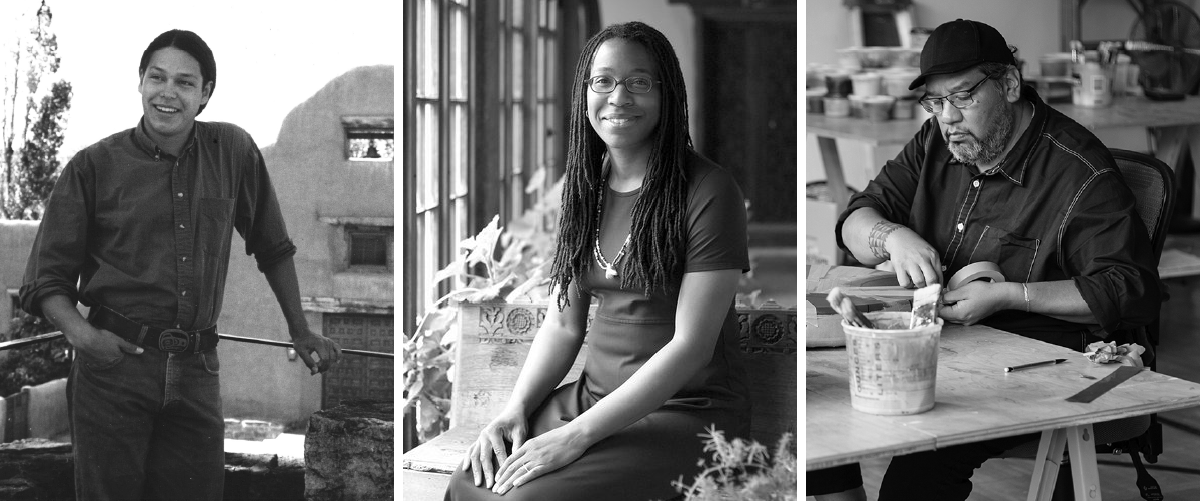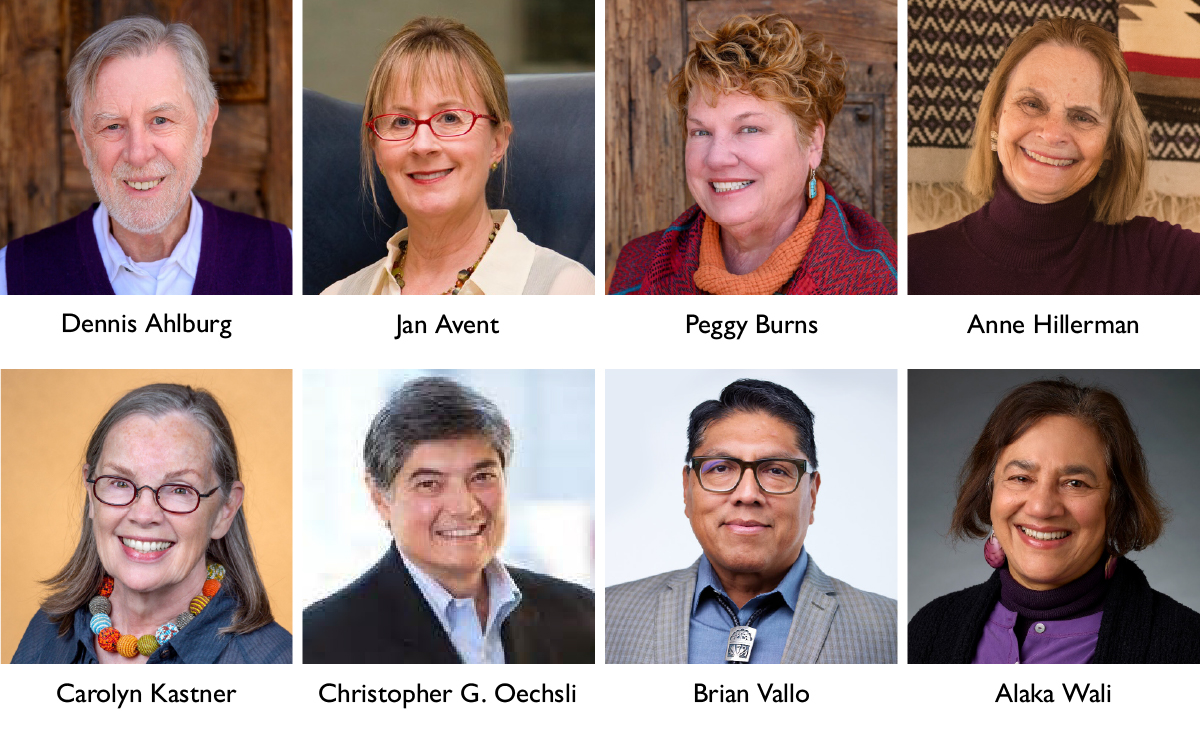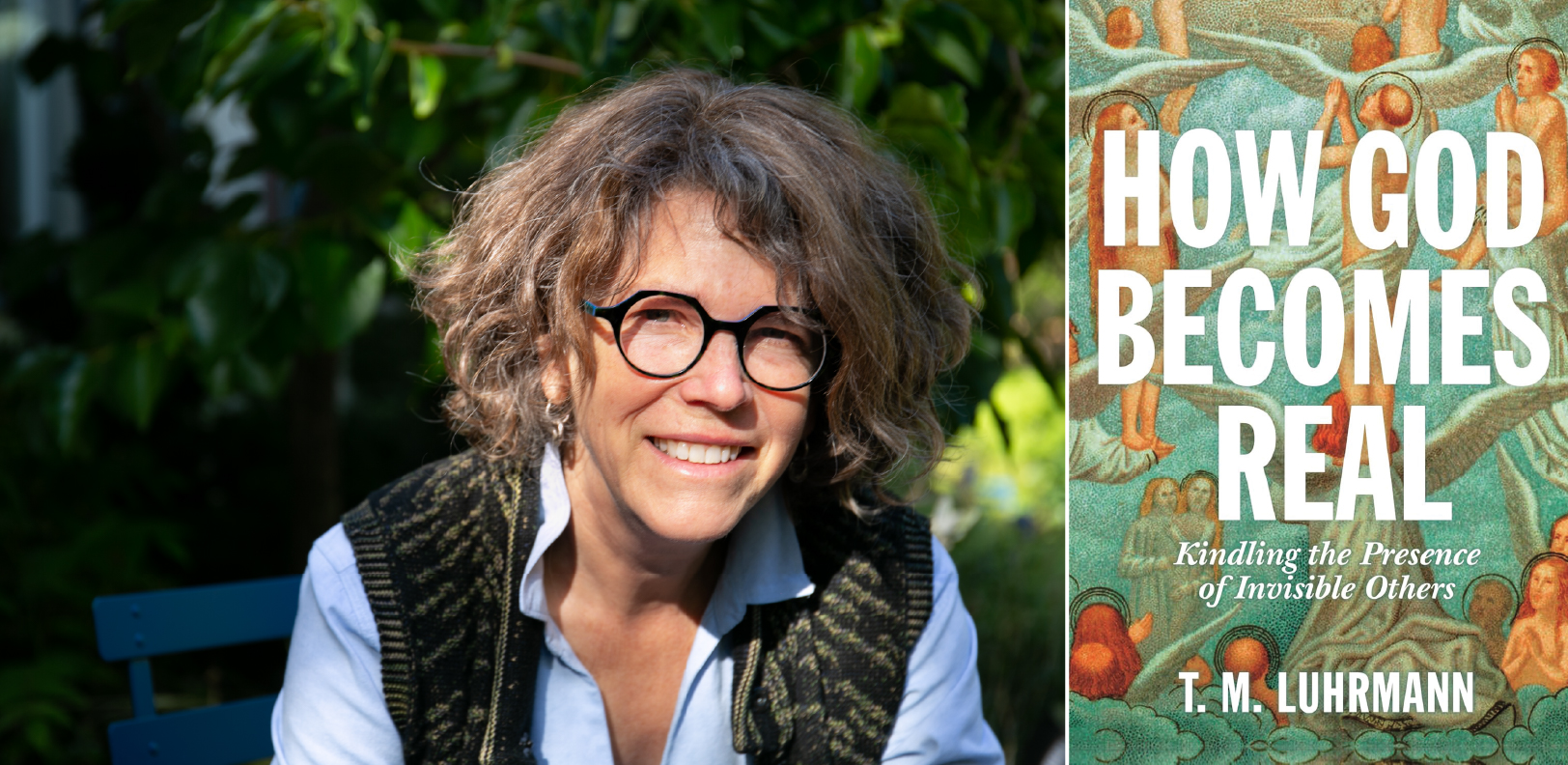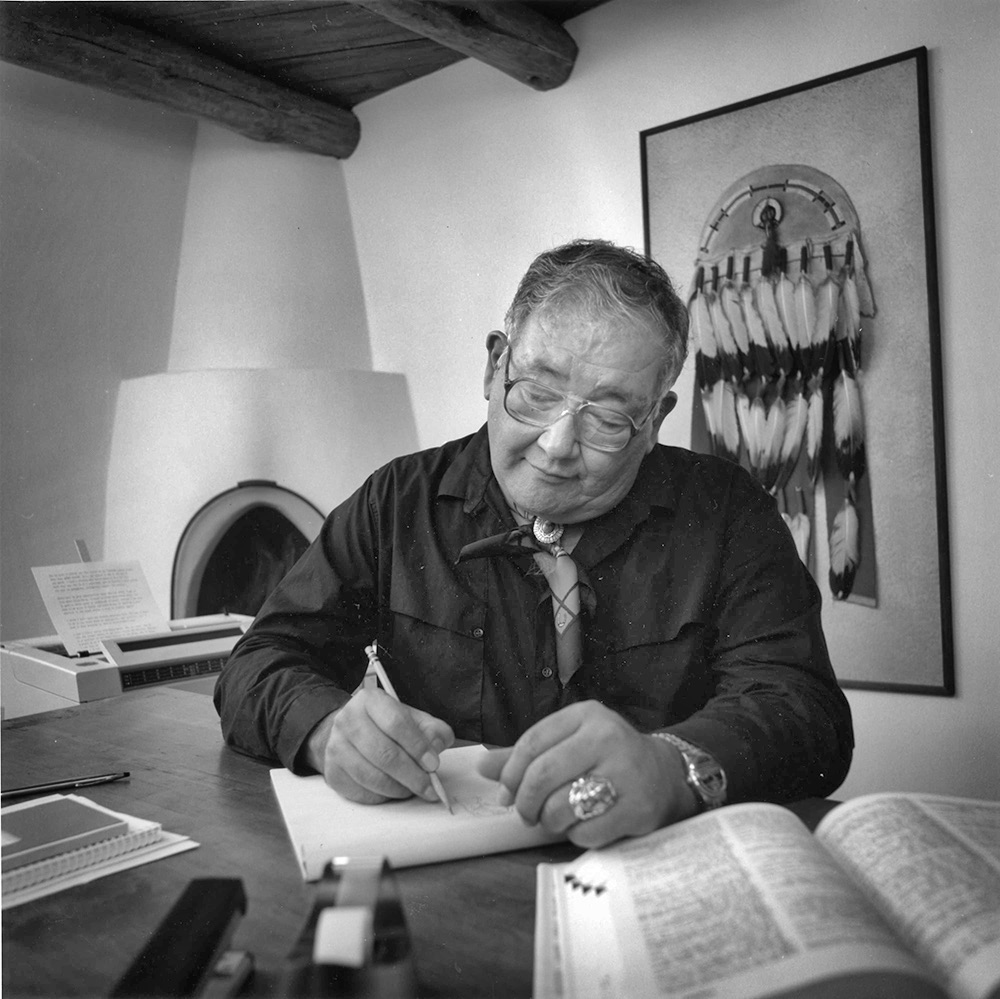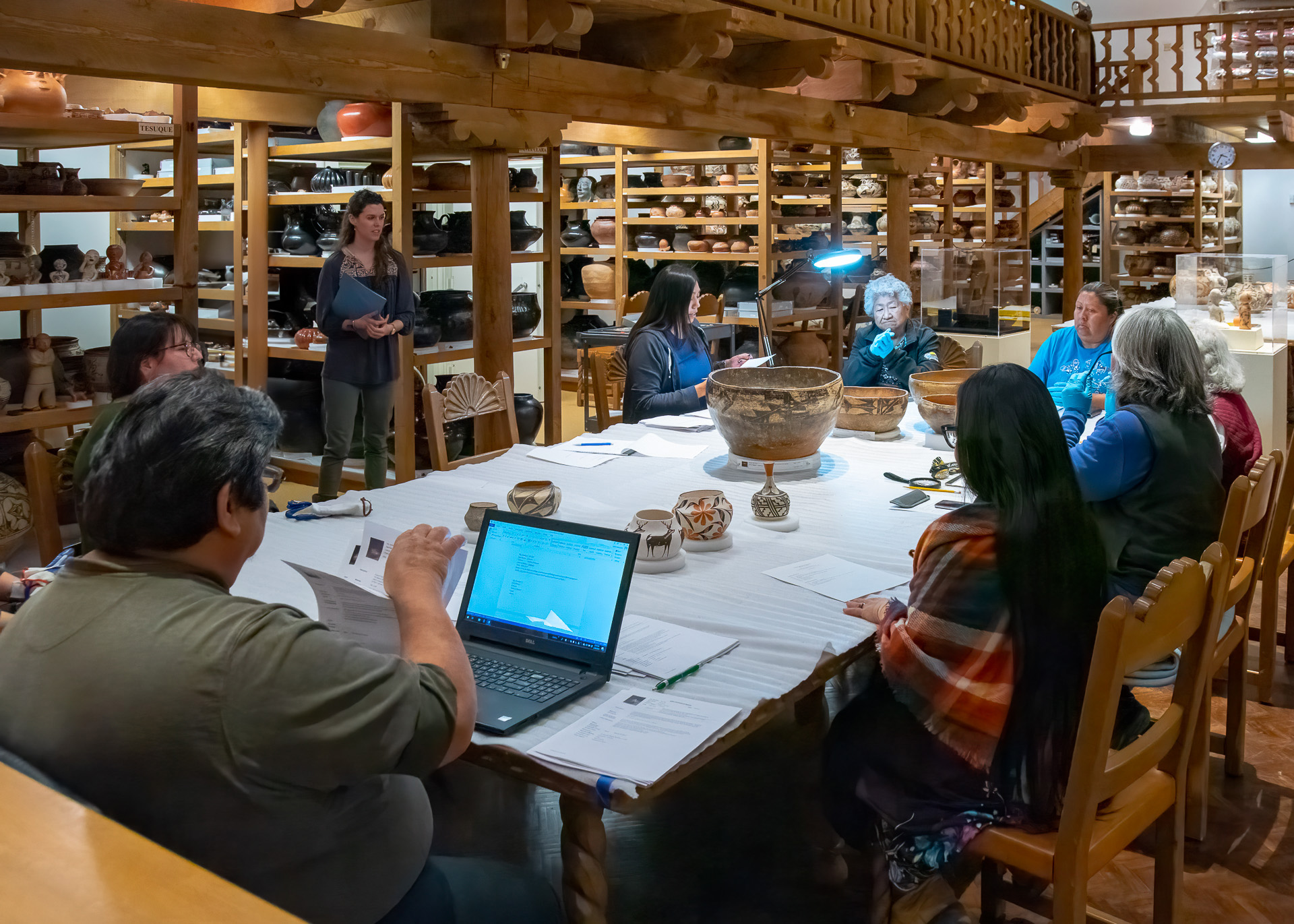Blog: Voices from SAR
Weaving Worlds with Words – the Collaborative Life of Dennis and Barbara Tedlock
There’s one couple who essentially “book-end” the scholars in that group from 1973 and to the 2000s: Barbara and Dennis Tedlock. They were poet scholars. Both taught poetry in addition to anthropology. Both wrote their own poetry and participated in literary readings. Their mission was to “expand and alter the ways in which anthropologists conduct and communicate their work,” expressed in just that way in the preface to the first issue of the American Anthropologist, which they edited as a husband and wife team from 1994-1998.
School for Advanced Research Awards Residential Fellowships to Three Native Artists
Santa Fe, New Mexico—The School for Advanced Research (SAR) is pleased to announce the recipients of the 2024–2025 Native Artist Fellowships: Kevin Aspaas (Navajo), Lynda Teller Pete (Navajo), and Sheridan MacKnight (White Earth Chippewa, Hunkpapa Lakota). Each year...
The First Three Resident Scholar Fellows at SAR
The first three Weatherhead resident scholar fellows on the new campus of the School of American Research in 1974. Left to right: Edwin L. Wade (1973-5), Joann W. Kealiinohomoku (1974-5), Earl Wesley Jernigan (1974-6). Photo courtesy of the School for Advanced...
SAR Board of Directors Announces Appointment of Morris W. Foster as Next SAR President
When Michael F. Brown accepted the role as president for the School for Advanced Research in 2014, he committed to leading the institution for ten years. True to his word, last fall Dr. Brown announced his retirement effective July 2024, ending a tenure of exceptional...
Dream to Reality: Beginnings of the Resident Scholar Program at SAR
Finding and fostering a place for scholars to live, study, and write in community was the dream of Douglas Schwartz. When he visited the School of American Research (SAR) in the fall of 1966 as “program consultant,” Schwartz was so sure he would remain in his tenured anthropology position at the University of Kentucky…
Three SAR Alumni in the National News
Both Ned Blackhawk (Katrin Lamon Fellow, 1996-1997; SAR Board of Directors 2017-2023) and Tiya Miles (SAR Fellow, 2007-2008) have been named 2024 Guggenheim Fellows. The John Simon Guggenheim Memorial Foundation awards these fellowships annually to “exceptional individuals in pursuit of scholarship in any field of knowledge and creation in any art form, under the freest possible conditions.”
SAR Welcomes New Board Directors
Over the past six months, the School for Advanced Research (SAR) Board of Directors appointed eight new Board and Advisory Board members. They bring experience in scholarship, language, marketing, development, social change programs, art history, writing and...
School for Advanced Research Awards the 2024 J. I. Staley Prize to T. M. Luhrmann for “How God Becomes Real”
Top Prize in Scholarship and Writing in Anthropology Awarded for Book That “Shows How Faith Is ‘Kindled’, or Intentionally Brought into Being” Santa Fe, New Mexico—The School for Advanced Research is pleased to announce the recipient of the 2024 J. I. Staley Prize:...
N. Scott Momaday, 1934–2024
Navarre Scott Momaday, the nation's most celebrated Native American writer, died at his home in Santa Fe on January 24. He was 89. Momaday, a member of the Kiowa Tribe, is remembered at SAR for his long service to this institution: as a Katrin Lamon Resident Scholar,...
SAR Receives $900,000 Grant from the National Endowment for the Humanities
Image: Collections review with the Pueblo of Acoma at the Indian Arts Research Center The School for Advanced Research (SAR) is honored to announce that it has been awarded a grant in the amount of $900,000 from the National Endowment for the Humanities (NEH). The...
